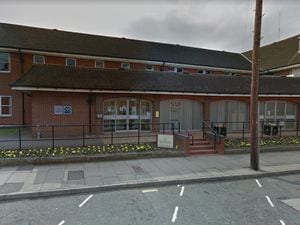Hourly wage gap between men and women grows at council
The gap between average hourly pay for men and women has increased at Lichfield District Council according to new figures.

Businesses and organisations which employ at least 250 workers are now legally required to publish details of the pay gap between men and women.
And Lichfield District Council is now putting together its third annual report on the differences in the mean average hourly wage received by male and female workers and the the median pay gap – which compares the middle salary when all male and female employees are considered.
The gap between the mean hourly rate of pay for men and women at Lichfield District Council was 8.48 per cent on March 31 this year – an increase from the 7.3 per cent gap recorded for March 31 2018. But the median pay gap was recorded as zero according to a report to the council’s Employment Committee.
The number of employees counted for this year’s figures was 388 – down from the 2018 headcount of 408.
The report to this week’s Employment Committee meeting said: “Changes in our staff numbers due to a review of casual workers and the use of IR35 employees (off-payroll workers who provide their services through an intermediary) has, as anticipated, increased our gender pay gap for this year.
“The 2019 gap of 8.48 per cent still fares well against the nationally published data. Equally, benchmarking data currently published by neighbouring district councils is also comparable.”
The report revealed that in 2018 neighbouring authority Cannock Chase Council had a mean hourly rate gap of 14.81 per cent, while Tamworth Borough Council’s gap was 12.6 per cent. But Nuneaton and Bedworth Borough Council’s mean hourly rate gap between men and women in 2018 was just 1.20 per cent – and East Staffordshire Borough Council had a 5.21 per cent gap.
The national mean hourly rate gap, according to 2018 data from the Local Government Association, was 6.8 per cent for the public sector and 12 per cent across all sectors. The national median pay gap was five per cent in the public sector and 9.7 per cent across all sectors.
A draft gender pay gap report presented to Tuesday’s meeting said: “Lichfield District Council aims to ensure people are treated fairly and equally, whether this is about the way we treat the public in the provision of our services, or our employees in the way they are treated at work. Diversity and inclusion are also key priorities.
“Used to its full potential, gender pay gap reporting is a valuable tool for assessing levels of equality in the workplace, female and male participation, and how effectively talent is being maximised.
“Our reported gender pay gap for this period is 8.48%, which although it is significantly lower than the national average there should be no room for complacency to improve our gender pay gap and it is important to continually review our data to really understand the causes of any imbalance.
“We have robust policies and procedures in place to make sure staff are paid fairly and equally across all sections of the workforce, and we are confident that our gender pay gap does not stem from paying men and women differently for the same or equivalent work.
“Over the past three years we have reduced our head count by 44 per cent, due to outsourcing of our leisure services, general efficiencies and senior management vacancies. These vacancies have meant that in some cases we have had a need to employ consultants – IR35 employees – which has had the effect of increasing our mean hourly rate pay gap.
“Our gender pay gap is reflective of our workforce make up, in that a significant number of our female staff are working part-time – over 55 per cent of the female staff work part time – with a larger proportion generally working in lower paid work which is demonstrated in our lowest quartile. In addition we host a joint waste service with Tamworth Borough Council, which traditionally attracts a larger proportion of male employees, and as a result, we employ a higher number of men in the lower middle quartile.”





